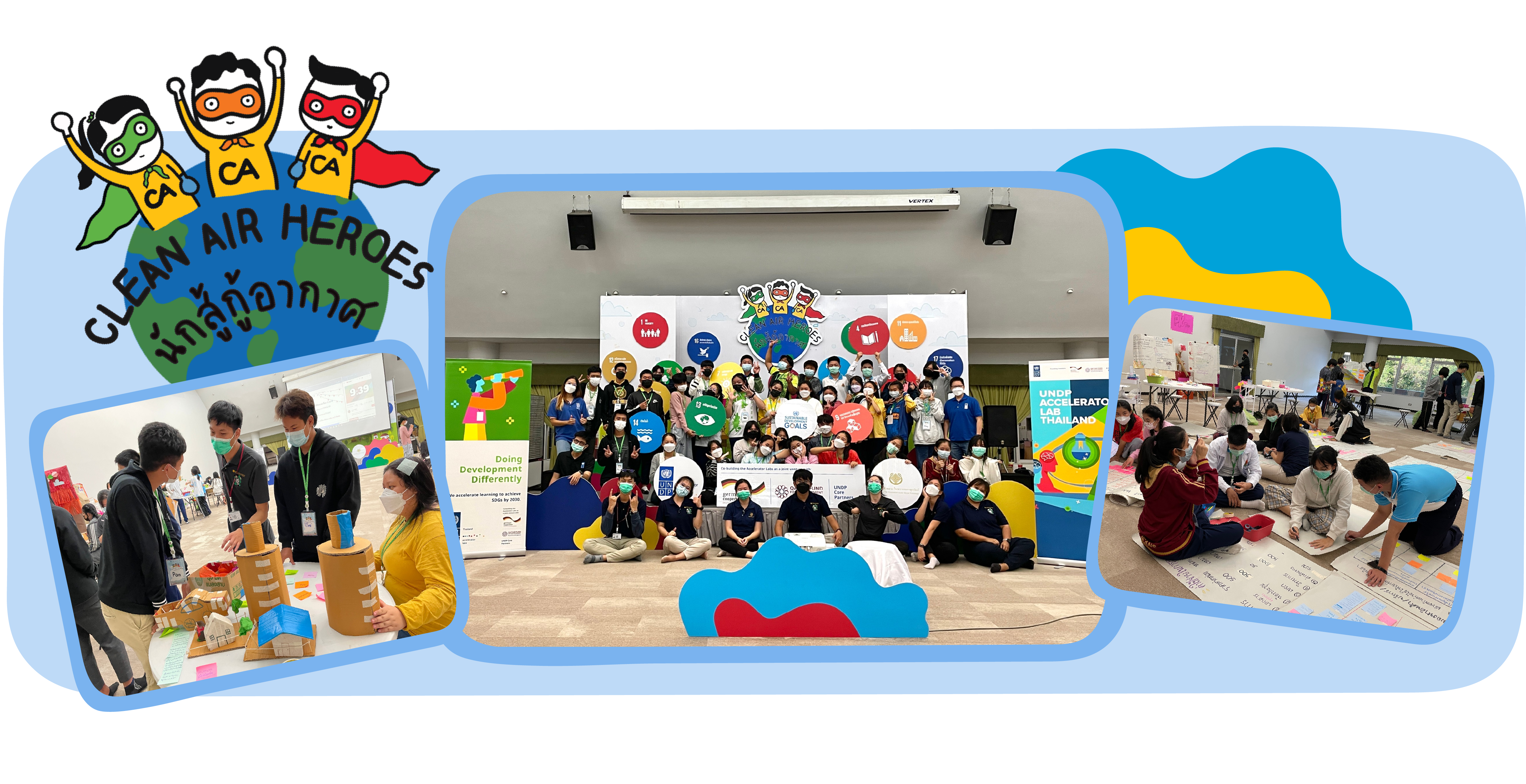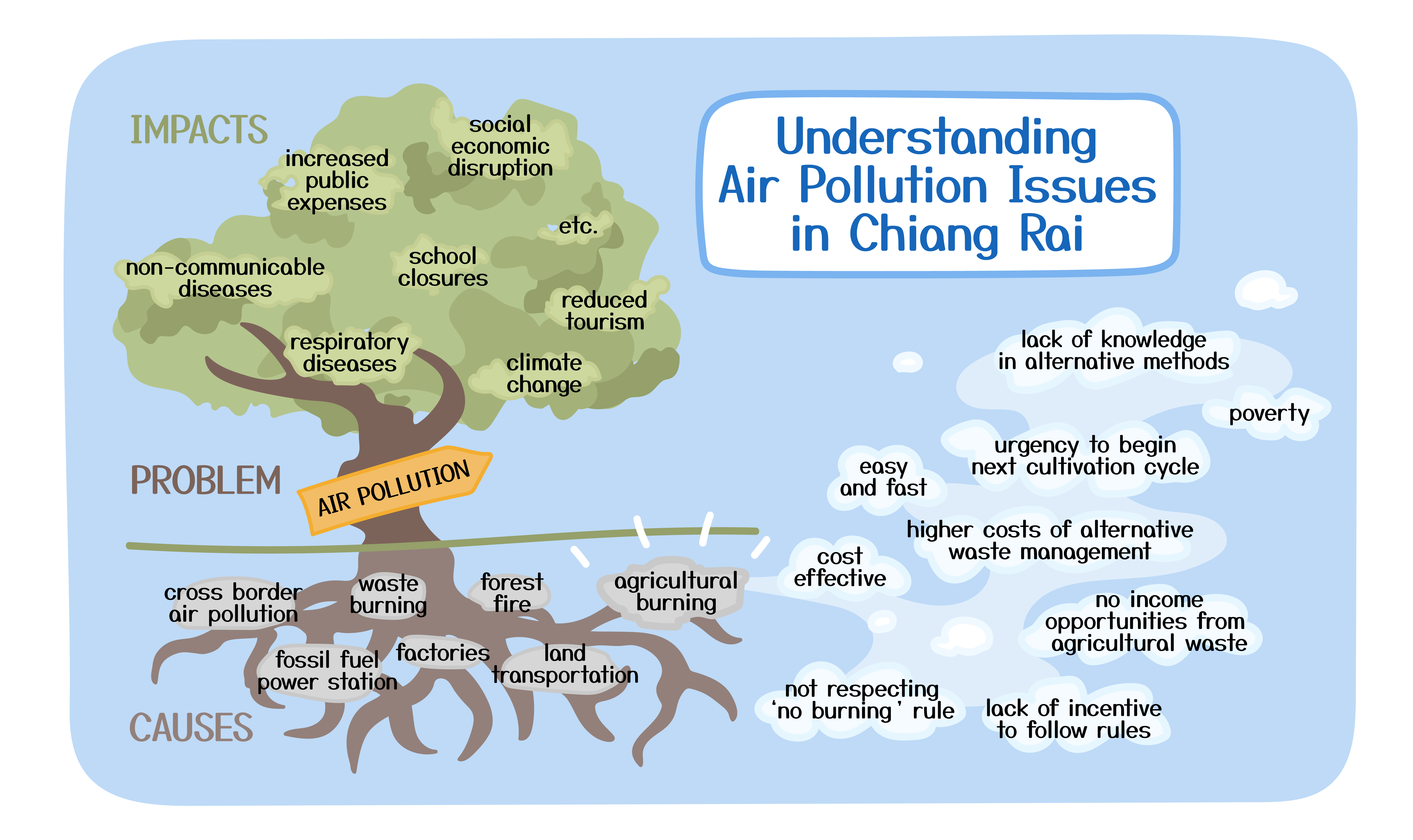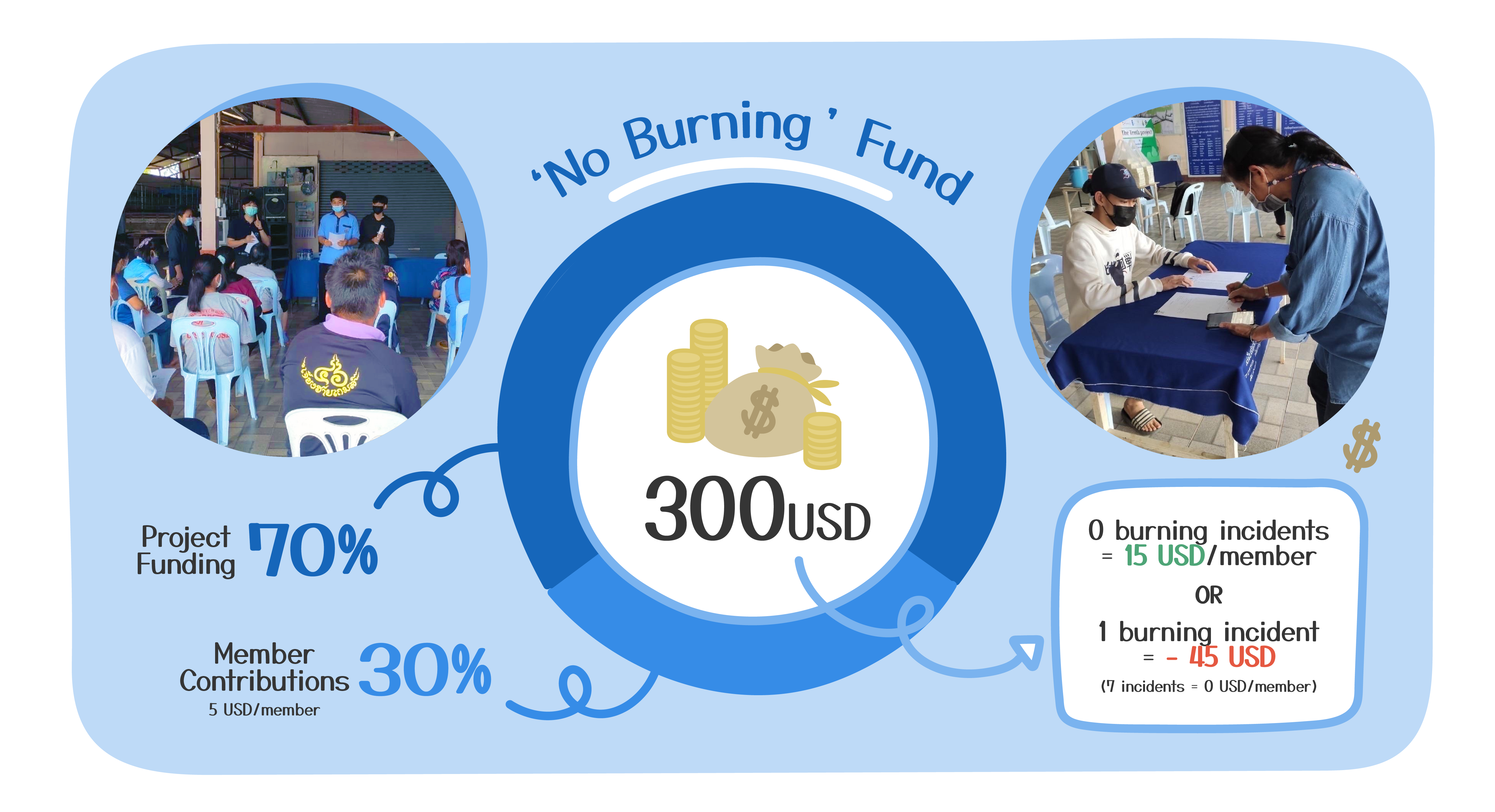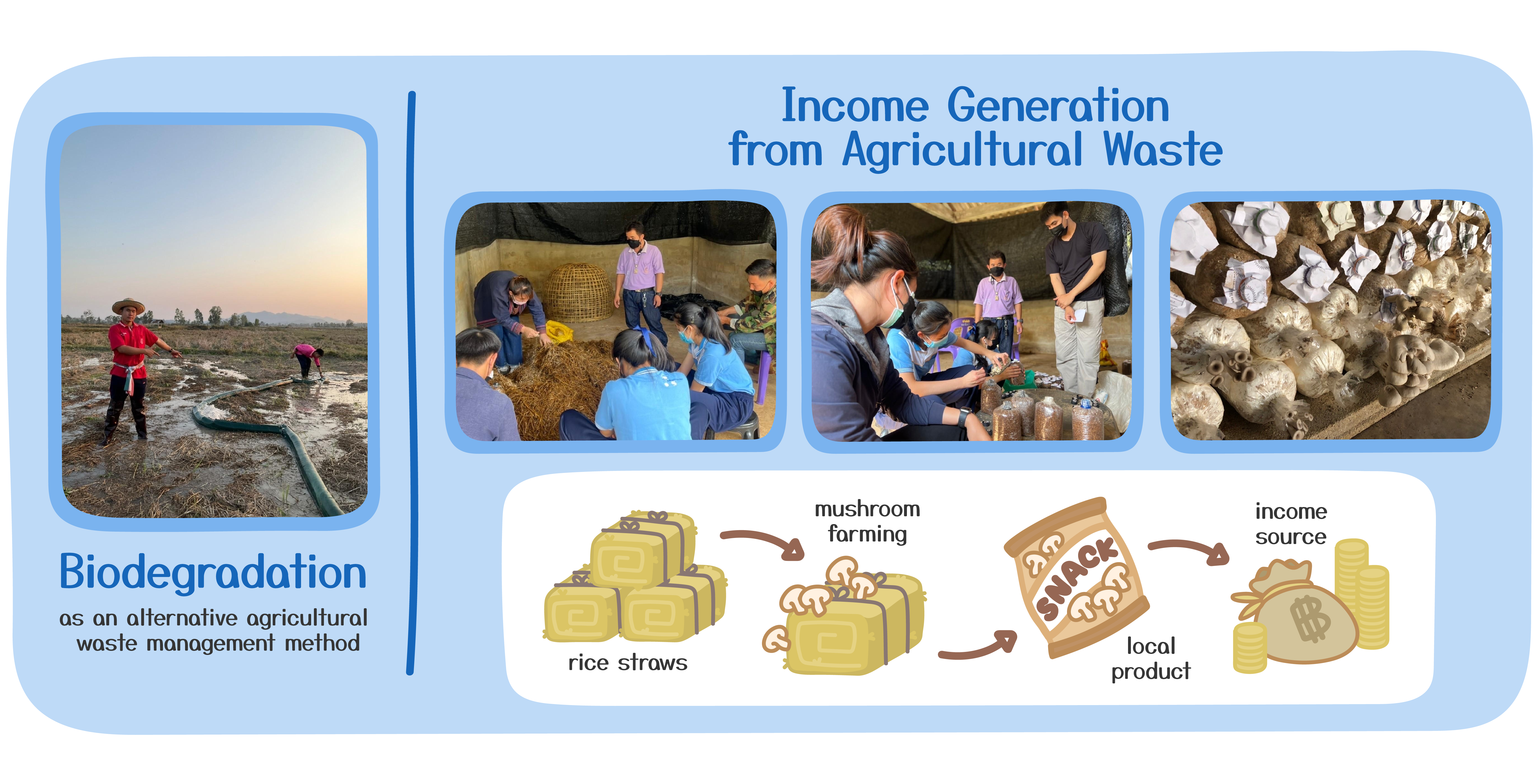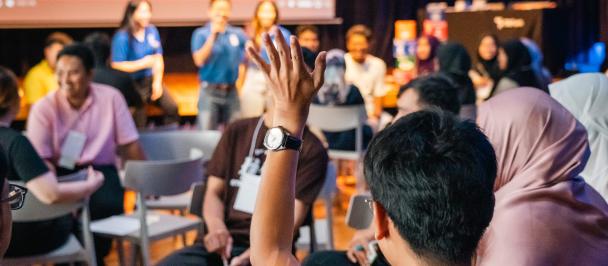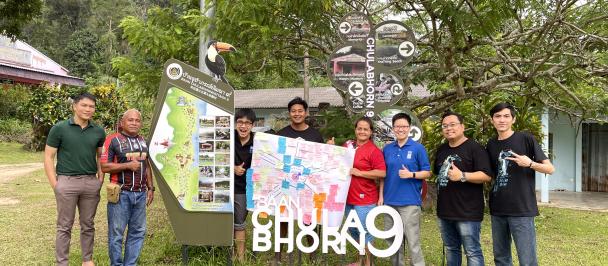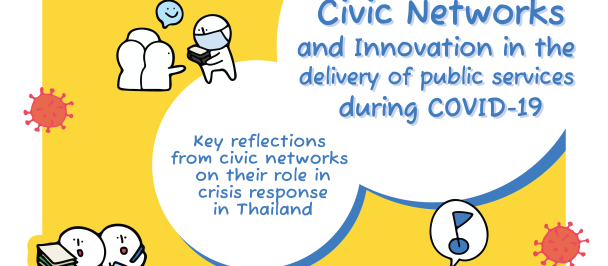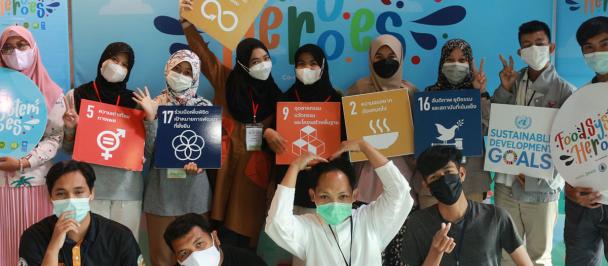Learning about the power of grassroots innovation and co-creation, UNDP Accelerator Lab Thailand joined hands with Youth Co:Lab team to roll out the second project under our ‘Local Heroes’ innovation challenge series. After addressing the challenges of food systems, we took on the challenge that has been affecting the people of Thailand nationwide, especially in the northern region- air pollution. We embarked on a co-creation journey with local stakeholders in Chiang Rai province in the far north, seeking to explore how air pollution issues can be tackled at the community level with the ‘Clean Air Heroes’ innovation challenge. The project engaged local youth as the agent of change to work with local authorities and civil society in developing local solutions to improve air quality from within their communities.
It turns out that the Clean Air Heroes does not only give us innovative local solution ideas but also gives us a hint on the application of portfolio approaches at the very local level. Portfolio approaches emphasize that multiple solutions are needed to shift complex systems; we often talk about portfolios comprising of solutions at multiple levels- from policies to market mechanisms and local interventions. However, our learning from the Clean Air Heroes reveals that portfolio thinking is also required for us to understand complex motivations and generate intelligence at the local level. Let’s see how our journey leads us there.
Setting the scene: Why air pollution?
Since before the COVID-19 pandemic, people in Thailand have been suffering from air pollution issues which entail multifaceted implications- from health to climate change, and economic development. No one is unaffected by dirty air. Both outdoor air pollution and low physical activity-lifestyle are important environmental risk factors of non-communicable diseases (NCDs) including cardiovascular diseases, chronic respiratory diseases, and diabetes. In the Asia Pacific Region, NCDs are now the most significant cause of death and disease and as a result impose a substantial social burden and economic costs (Low et al, 2015).
In Thailand, the government has determined key contributors to poor air quality to include agricultural burning and forest fires in rural areas, vehicular emissions and constructions in the cities, and industrial discharges in concentrated industrial zones (Pollution Control Department, 2019). However, air pollution is not only a national issue but a transboundary one. Provinces in the northern region, including Chiang Rai, have suffered from pollutants caused by local contributors as well as the transboundary flow of haze from Lao PDR and Myanmar.
Clean Air Heroes: How do we shift local mindset?
Obviously, air pollution is one of those ‘wicked problems’, highly complex and multidimensional. Such problems have the tendency to make those involved feel so ‘powerless’. Because they cannot be solved by any single point solution, people can feel that it is beyond them to do anything. “It is a big issue and up to the governments and large-scale corporations to solve; small people like us would not make much of a difference”, such saying is not uncommon to hear. While it is true that air pollution cannot be tackled by local communities alone and require multi-level solutions- from local initiatives to national policies and regional cooperation, the Clean Air Heroes seeks to overturn this mindset. The project aims to demonstrate that local efforts can and must play a part in addressing large-scale issues like air pollution. Apart from viable local solutions, the shift in the mindset of stakeholders is arguably also the prerequisite of system transformation.
In late 2021, the UNDP Accelerator Lab Thailand and Youth Co:Lab team reached out to local partners, namely the Chiang Rai Governor Office and the Mae Fah Luang Foundation under Royal Patronage. Together, we launched the Clean Air Heroes inviting local youth to join our social innovation journey to improve air quality in their communities. Applicants were not required to have pre-existing innovation ideas in mind but must show some understanding of the issue. Ten teams were selected to participate, learn about social innovation development, and put their learning into practice. Fieldwork was the core component to ensure that the teams truly empathize with the stakeholders and come up with ideas that address the real needs of the communities.
Throughout the process, the teams learnt to analyze the web of interconnected issues that lead to air pollution. Burning of household and agricultural waste came up as the most prominent contributor of air pollution at the community level. They moved from assuming that local people engage in burning practice because “they lack good conscience” to seeing a much wider range of reasons- not knowing about other options, being trapped in the cycle of unsustainable production, lacking incentives to change behavior, etc. From that deeper understanding, the ten teams developed their innovation ideas. The judge panel comprising of representatives from the government, private sector, academia, civil society, and UNDP then selected three finalist teams to test out their ideas. Interestingly, while all of the teams aim to stop agricultural burning, they each approach the problem from different angles.
Approaching the problem from different angles: Need for portfolio of solutions?
From their empathy exercise, Ameno Ranger team found that the head of village has been having a difficult time trying to reinforce the ban on burning during the haze season (January to April). This is a long-existing rule but is not well respected by the villagers. To tackle this, Ameno Ranger developed the ‘no burning’ fund to incentivize members to respect the rule. They referred to the loss aversion concept (Kahneman & Tversky, 1979) and designed for fund members to each contribute 5 USD to the fund to create a fear of loss. Member’s contribution makes up 30% of the fund and the project subsidizes the other 70%. By the end of the banning period, if there is no burning by the members, each of them will get 15 USD back. In contrast, if there are burning incidents, each one will result in 45 USD deduction of the fund (approximately 15% of the total fund); the more incident, the less money each member will receive (or none at all). From their one-month trial, all members did not burn their waste at all. The next challenge is how to generate income from compost made from waste materials as this will reduce dependency on the project’s subsidy in the long run.
Meanwhile, PK team focused on finding an alternative method to manage agricultural waste. After harvesting rice, rice straws are left and burning is the most common method- fast and cost-effective. By working in close collaboration with local government agencies, PK team found an existing solution by the Land Development Department- biodegradation using micro-organisms and promoted the method among local farmers. The new practice helps farmers process rice straws without having to burn them but it takes about two weeks to complete the process. The team outlined the benefits of investing time in this alternative method e.g. improving soil quality. However, the challenge also prompts us to think of other waste management options. Kids Love the World team supplied exactly that; the team explored how to generate income from rice straws and found that rice straws make excellent mushroom cultivation materials. Together with their municipality, the team experimented mushrooms cultivation and planned to process them into local savoury snacks. Both fresh mushrooms and mushroom snacks can be sold in local markets. The team forecasted that mushroom sales would generate an income of over 500 USD per acre, which is considered substantive and will incentivize farmers to make use of rice straws instead of burning them.
Reflecting our learning: Portfolio thinking at the local level?
As today’s world is volatile, uncertain, complex, and ambiguous (VUCA), development practitioners have been discussing much about portfolio approaches which will help us learn about the complex and dynamic development space, and de-risk our investment by working with multiple interventions rather than one single-point solution.
The authors of UNDP’s System Change: A Guidebook for Adopting Portfolio Approaches define that “In its simplest form, this [portfolio-based approach] is a methodology that seeks to develop, test, learn and scale (where appropriate) a suite of interventions that are complementary and can shift complex systems by focusing on multiple intervention points at a given time. In this way, the portfolio is a platform for strategic learning and action: to understand the dynamics that occupy the problem space, and over time more accurately understand the aligned interventions.”
When the Accelerator Lab first started its work on air pollution, we thought of the portfolio approach as a set of interventions at multiple levels to drive systemic change e.g. local innovation, subnational models, national policies, international cooperation, etc. Through our Clean Air Heroes journey, we learnt that the portfolio thinking is required to drive change at the very local level too. See it as a microcosm in the bigger universe of the problem. It may be small in scale but complex in its own and thus calls for multiple solutions with the intent to achieve a common goal. Some are deemed to fail but they are equally valuable in helping us understand the complex issues.
What next?
- In parallel with the Clean Air Heroes initiative, the Accelerator Lab has also been working with the Agirre Lehendakaria Center (ALC) on Social Innovation Platform and with the Millennium Institute on policy modeling. Follow our next blog to read more about this. With all these components together, we will continue to grow our portfolio of solutions to improve air quality in Chiang Rai, which will serve as a model at the subnational level.
- The insights we gained confirm that air pollution issues cannot be solved within national boundaries. Air and wind respect no boundary so our solutions must also be transboundary. Therefore, the Accelerator Labs in Thailand and Lao PDR have started discussing a joint innovation challenge to bring innovators on both sides of the border to co-create solutions together!

 Locations
Locations
